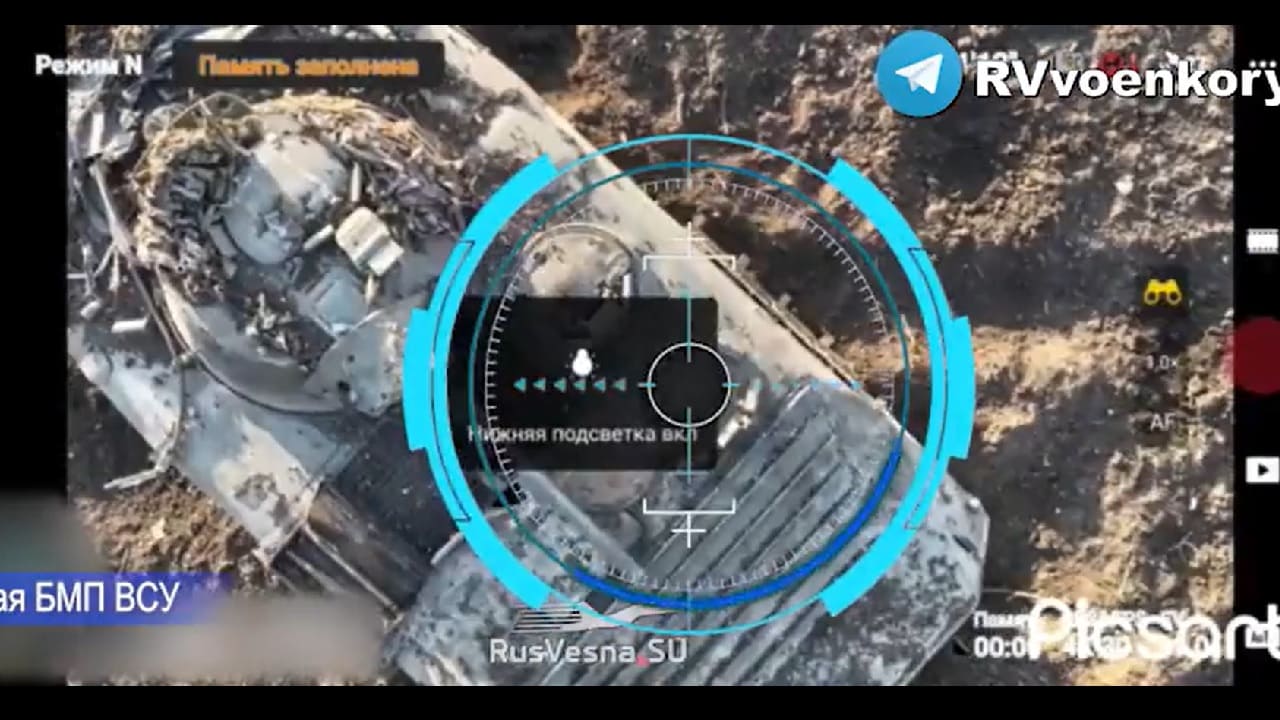A newly published video indicates Russia’s fleet of infantry fighting vehicles is not faring well amidst Ukraine’s counter-offensive efforts.
The open-source intelligence group Ukraine Weapons Tracker released footage on Twitter showing the destruction of an abandoned Russian BMP-1 infantry fighting vehicle this week.
In the short clip, an FPV loitering munition of Ukraine’s 93rdMechanized Brigade appears to be behind the assault in Donetsk Oblast. It is unclear why Kyiv would obliterate an already abandoned piece of military equipment, especially considering the significant role infantry fighting vehicles have played since the onset of the invasion. However, Ukraine possesses American-made Bradley IFVs and other more advanced armored vehicles, which may render the Soviet-era BMP-1 less useful for its troops.
A Brief Overview of the BMP Series
Russia’s family of amphibious tracked Boyevaya Mashina Pyekhoty (BMP) infantry fighting vehicles can be traced back to the Soviet era. Following the Second World War, the USSR primarily used APCS as “battle taxis.” While these vehicles functioned relatively well for many years, they lacked crucial capabilities. Firstly, crew members had to disembark from the vehicles to be able to operate weapons. Additionally, the APCS were either open-topped or not fully sealed, offering minimal protection from nuclear or chemical weapons. For these reasons, the Soviet Army outlined requirements for an improved model to allow all crew members to fire from within the vehicle.
The BMP-1 model was first tested during the 1973 Yom Kippur War in Israel where it was used by both Syrian and Egyptian forces. Russia then tweaked the design to rectify shortcomings that emerged during combat, producing a successor variant. From 1987-1994, more than 300 BMPs were produced. By the early 2000s, the latest BMP-3 iteration re-entered mass production.
According to Army Recognition, a 100mm 2A70 rifled gun is fitted to the infantry fighting vehicle, which can fire various high-explosive fragmentation rounds at a rate of 8-10 rds/minute. The gun can also fire 9M117 laser-guided anti-tank missiles, which are capable of penetrating hefty conventional steel armor. As detailed by the outlet, “Russia has also developed the 9M117M and 9M117M1 fitted with a tandem warhead able to penetrate ERA (Explosive Reactive Armor). The missile has a firing range from 100 to 5,500 m.”
The BMP Family Has Not Fared Well in Ukraine
While the BMP-3 sports several improvements, the infantry fighting vehicle has not held up well in the Ukraine invasion. Perhaps its greatest design flaw is its troop-carrying abilities. Since crew members have to exit the vehicle from the hatch of the hull roof and not the rear, the time to dismount is very tedious. This factor, in addition to the advanced slew of Western-delivered weaponry provided to Kyiv, has culminated in the destruction of hundreds of BMPs since the onset of the war. The open-source intelligence group Oryx estimated that at least 700 BMPs have been destroyed in the last year alone.
This Fall, Ukraine is expected to receive dozens of sophisticated Western armored vehicles to aid its defensive efforts. The U.S. pledged to send over 31 M1A1 Abrams tanks, which complement the dozens of German Leopards and British Challengers expected to hit Ukraine’s front lines by the end of the war. Russia’s remaining fleet of BMPs and other antiquated Soviet-era vehicles will not bode well against the addition of these formidable tanks.
#Ukraine: The destruction of an abandoned Russian BMP-1 infantry fighting vehicle by a FPV loitering munition of the 93rd Mechanized Brigade in #Donetsk Oblast. pic.twitter.com/4aLXbmEuXd
— ???????? Ukraine Weapons Tracker (@UAWeapons) September 18, 2023
Maya Carlin, a Senior Editor for 19FortyFive, is an analyst with the Center for Security Policy and a former Anna Sobol Levy Fellow at IDC Herzliya in Israel. She has by-lines in many publications, including The National Interest, Jerusalem Post, and Times of Israel. You can follow her on Twitter: @MayaCarlin.

